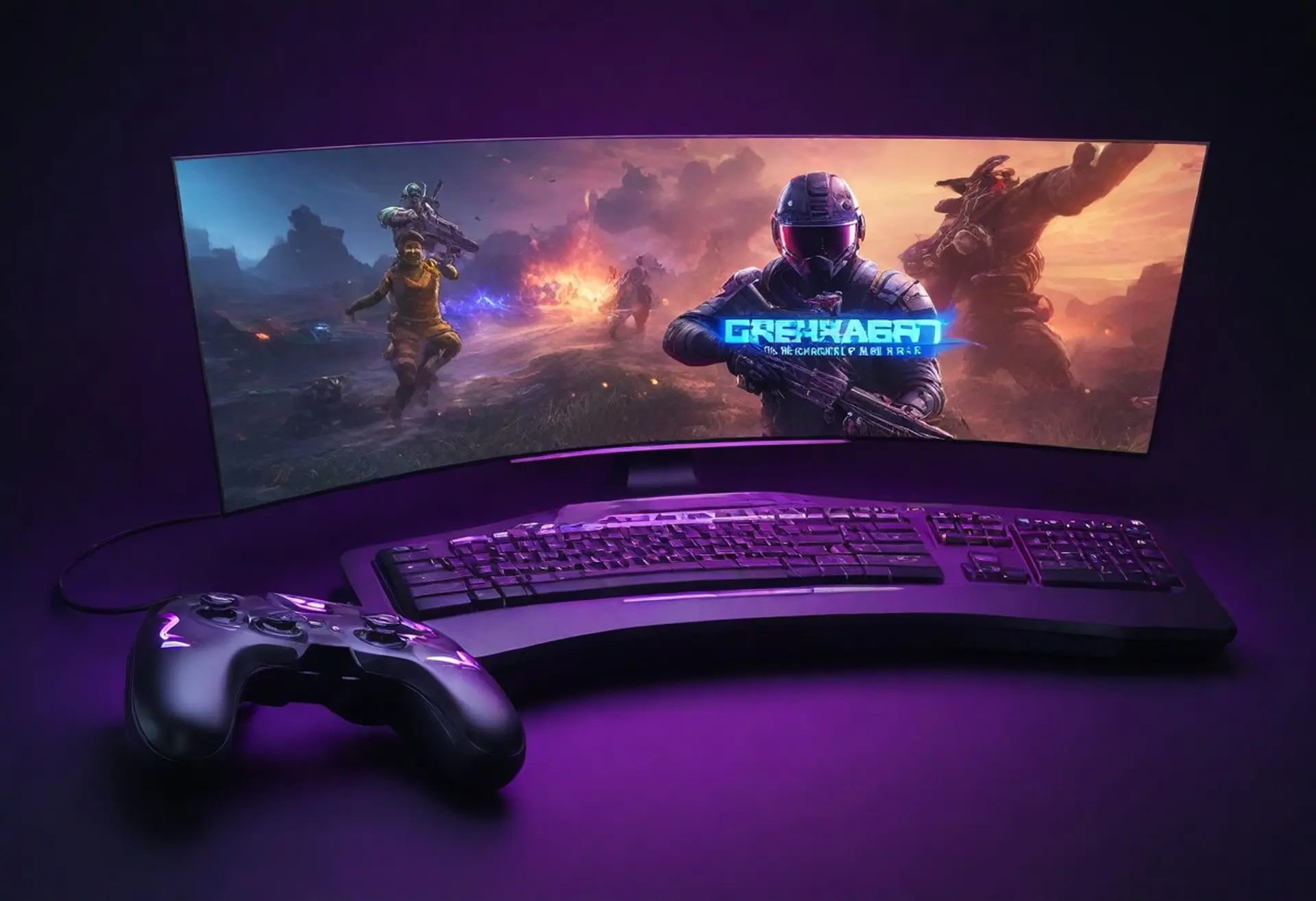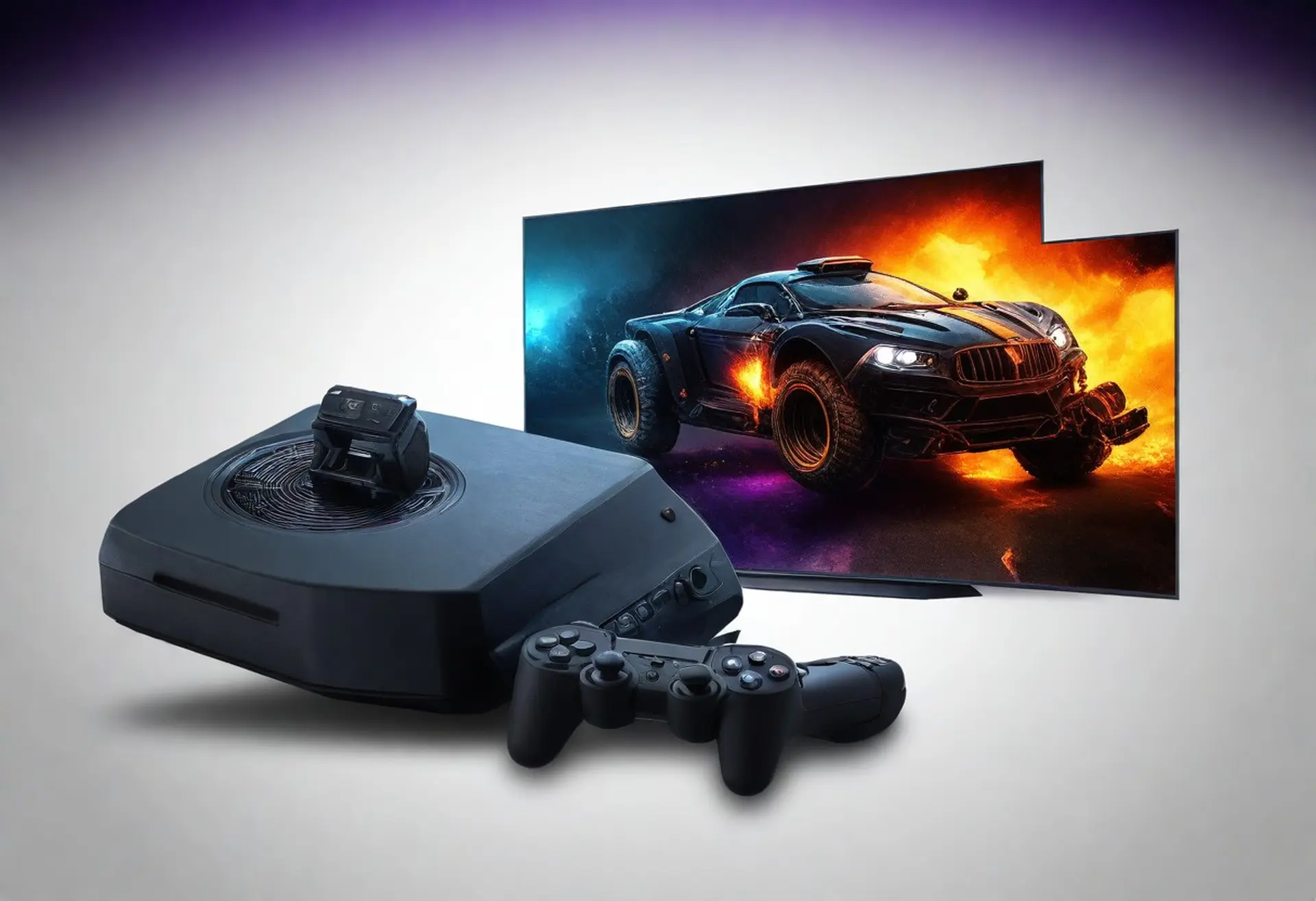The world of game development is a visual one. From the vibrant landscapes to the captivating characters, creative assets are the foundation for an immersive and engaging player experience. Whether you're a seasoned game developer or just embarking on your development journey, understanding the importance of these assets is crucial.
However, crafting visually stunning and impactful assets can be a daunting task, especially for those without extensive design or illustration experience. Fear not! This blog offers five practical tips to empower developers of all skill levels to create compelling game assets. By following these guidelines, you'll be well on your way to developing a game that not only looks and sounds phenomenal, but also captivates players and leaves a lasting impression!
Art with Intention: Aligning Your Game's Visual Identity with its Essence
Crafting captivating creative assets starts with defining your game's art style, the visual language that breathes life into your world. This style can range from realistic to stylized, existing in both 2D and 3D realms.
Choosing one that complements your game's theme and narrative is crucial. A dark fantasy might thrive with a gothic aesthetic, while a lighthearted adventure could benefit from a vibrant, cartoonish style.
Once you've identified your direction, create a mood board - a collection of inspiring visuals like game art, photographs, and colour palettes - to solidify the look and feel of your creative assets. It can include:
Artwork from other games: Look for titles that resonate with your chosen style and thematic elements.
Photographs or paintings: Find inspiration from real-world visuals that evoke the desired mood and atmosphere.
Colour palettes and textures: Experiment with different combinations to establish a visual identity that aligns with your game's core.
By defining your art style and crafting a mood board, you'll lay the groundwork for cohesive and impactful creative assets. This foundation will guide you as you create characters, environments, and other visual elements that bring your game world to life.

Streamline Your Workflow: Efficient Game Asset Creation with Vector Graphics
While pixel art and 3D modelling dominate the landscape of game visuals, vector graphics offer a distinct set of advantages that make them a compelling choice for game developers. Unlike pixel art, which can become blurry when scaled, vector graphics utilise mathematical formulas, allowing them to maintain perfect clarity and sharpness regardless of their size.
This makes them ideal for creating user interfaces (UI) elements like buttons, menus, and health bars, ensuring they remain crisp and readable even on high-resolution displays or when resized for different screen sizes.
Furthermore, vector graphics offer significant efficiency benefits. Their lightweight nature allows for faster loading times and smoother performance, especially on mobile devices or older hardware.
Additionally, their non-destructive editing capabilities enable developers to easily modify and adjust shapes and colours without compromising image quality, streamlining the overall asset creation process.
Last but not least, an efficient workflow with high quality and high resolution assets will make life considerably easier once you’re ready to get stuck into video game marketing for release.
These advantages, combined with their unique aesthetic potential, make vector graphics a valuable tool for game developers seeking to create visually appealing and performant titles.
Make Your Characters Stand Out
Characters are the heart and soul of many games, serving as the anchor for the narrative and a key player in fostering engagement. To truly captivate your audience, creating visually striking and memorable characters is crucial. This journey begins with experimentation. Explore diverse combinations of shapes, colours, and textures to inject personality and spark visual interest.
Consider the power of contrast. Highlighting key features through contrasting colours, like bold outlines against a muted background, can significantly enhance your character's visual appeal. Remember, impactful characters aren't simply drawn; they're designed with intention, leaving a lasting impression on your players.
Look at Samus Aran from Metroid, whose sleek armour and powerful posture instantly convey her strength and resilience. On the other hand, iconic characters like Link from The Legend of Zelda or the cast of Team Fortress 2 use a blend of simple shapes and vibrant colours to create instantly recognizable silhouettes, perfect for fast-paced gameplay. Even characters with limited visual detail can leave a mark.
The minimalist design of the nameless protagonist in Journey, shrouded in flowing robes, evokes a sense of mystery and vulnerability, perfectly aligning with the game's themes of companionship and exploration. These are just a few examples of how character design, when wielded thoughtfully, can become a powerful tool for storytelling and player engagement, as well as a potential draw in your video game marketing efforts
Use Sound Effects to Create an Immersive Game Experience
Sound design in games isn't just about background noise; it's a carefully crafted symphony that elevates the entire experience. Great sound design draws players deeper into the world, enhances gameplay mechanics, and evokes emotions. Take, for instance, Subnautica, where the vast ocean comes alive with the distant roars of leviathans, the hum of your submarine, and the crackle of escaping air, creating an ever-present sense of awe and vulnerability.
Similarly, in Metal Gear Solid, the iconic "!" alert sound instantly conveys enemy detection, adding tension and strategic urgency to gameplay, making sound an integral part of the information system.
Beyond immersion and mechanics, sound design can also be a powerful storytelling tool. Silent Hill 2 utilises disturbing soundscapes filled with unsettling whispers and distorted music, creating a chilling atmosphere that amplifies the game's psychological horror themes. Conversely, Journey's soaring orchestral soundtrack perfectly complements its themes of companionship and exploration, evoking a sense of wonder and emotional connection.
From the playful charm of Super Mario Bros.'s jumping sounds to the witty dialogue and humorous sound effects of Portal 2, sound design has the power to shape the tone and emotional impact of a game in profound ways. By understanding these diverse functionalities, developers can utilise sound design as a potent tool to truly captivate their audience.

Get Feedback and Iterate
In the pursuit of creating captivating game assets, seeking feedback is an invaluable step. It allows you to step outside your own creative bubble and gain valuable insights from fresh perspectives. Sharing your work with trusted friends, fellow developers, or even online communities opens the door to honest and constructive criticism.
This feedback is crucial for identifying areas where your assets might fall short. Perhaps a character's design is visually confusing, or an environment's colour scheme doesn't evoke the intended mood. By receiving honest feedback, you can uncover blind spots and identify opportunities for improvement.
Don't be afraid to embrace the iterative process after receiving feedback. Iteration is the heart of good design, allowing you to refine your work based on the insights you've gained. Take the feedback to heart, analyse its merits, and make adjustments to your assets.
This iterative process, fueled by external feedback, is ultimately what helps you bridge the gap between your vision and a final product that resonates with your target audience and truly enhances their gaming experience.
Beyond Aesthetics: How Creative Assets Can Elevate Your Game's Impact
While crafting captivating creative assets for your game can be a demanding and time-consuming journey, the payoff is undeniable. By implementing these five crucial tips, you'll be well on your way to developing visuals and soundscapes that truly engage your audience, as well as having some amazing assets to aid your video game marketing efforts:
1. Define your game's art style: This foundational step goes beyond aesthetics, establishing a visual language that resonates with your game's theme and narrative.
2. Embrace the power of vector graphics: These lightweight, scalable visuals ensure crispness and clarity on any screen size, making them ideal for user interfaces and ensuring smooth performance.
3. Design characters that captivate: Experiment with shapes, colours, and textures to inject personality and visual interest. Consider the power of contrast to make your characters pop!
4. Master the art of sound design: More than just background noise, sound design immerses players, enhances gameplay mechanics, and evokes emotions, shaping the overall experience.
5. Seek and embrace feedback: Don't be afraid to share your work and gather honest feedback from trusted sources. This valuable input helps you identify areas for improvement and bridge the gap between your vision and a final product that truly resonates with your players.
Remember, creating compelling creative assets is an iterative process. Embrace the feedback, refine your work, and don't settle until you're satisfied with the final product. Your dedication will translate into a game that not only looks and sounds amazing but also leaves a lasting impression on your players.



